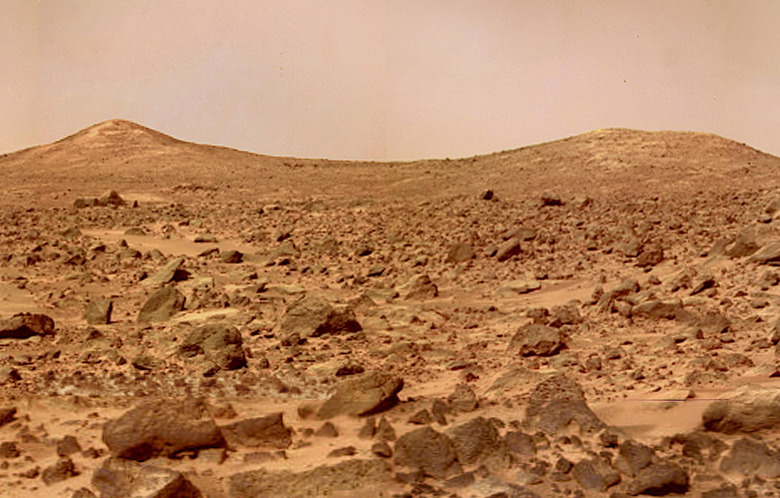Mars Is Wobbling, And Scientists Have Questions
- Using data collected over 18 years of observations, scientists now say that the planet Mars is wobbling.
- The planet's wiggling results in its poles moving on a regular basis.
- Earth also has a wobble, but the Mars wobble is a bit more of a mystery than Earth's since Mars has no oceans.
When you think of the planets in our solar system you probably imagine that they just kind of spin like tops. They rarely rotate exactly in line with their orbital plane — Earth, for example, spins at an angle of roughly 24 degrees — but most simple models of the solar system make it look like planets spin perfectly. Well, some don't, and we just discovered that Mars is one of those planets.
In a new paper published in Geophysical Research Letters, scientists reveal that Mars has a bit of a wobble to it. This means that its poles don't line up perfectly all the time, shifting on a timeline of roughly 207 days. That makes Mars the second planet with a known wiggle (called a Chandler wobble). The first? Earth.
Earth's Chandler wobble has been known about for a while now — it's named for Seth Carlo Chandler, the man that first noticed the wobble back in 1891 — and there is still some mystery related to how and why it wobbles the way it does. Mars, on the other hand, is even more mysterious, due in large part to all the things that the Red Planet doesn't have that Earth does.
The origins of Earth's wobble aren't fully understood, and theoretically, it should have settled down over time. However, the fact that Earth has so much water and a thick atmosphere means that this imbalance can persist indefinitely. Mars, on the other hand, is much different.
A summary of the discovery, by the authors:
For the first time for any solar system body other than the Earth, one component of the motion of the Mars spin axis on the surface of Mars, called the Chandler wobble, has been detected. The motion has a period of 206.9 ± 0.5 days, an amplitude of 10 cm on the surface, and is in a nearly circular counterclockwise direction as viewed from the North Pole. The pole motion is determined from radio tracking observations of Mars Odyssey, Mars Reconnaissance Orbiter, and Mars Global Surveyor, in order of decreasing sensitivity. The detection of the Chandler wobble improves our understanding of energy dissipation in the mantle for time intervals near the wobble period.
The wobble detected on Mars is more subtle than that of Earth, but Mars also doesn't have any moving surface water to help sustain the motion. However, Mars does have an atmosphere. It's much less robust than Earth's, but atmospheric pressure could be aiding in keeping the wobble going. Still, it's likely to eventually disappear entirely, though it's hard to say how long that would take.
